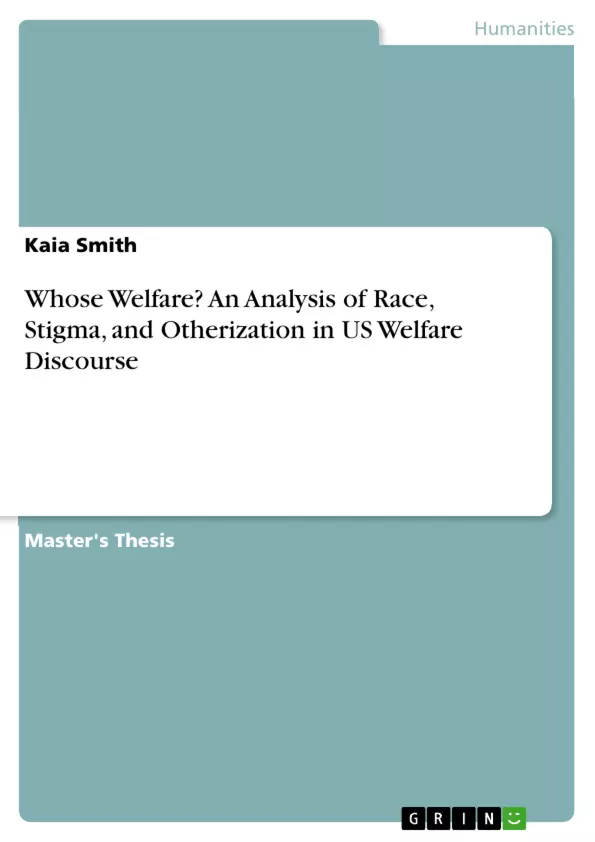On 22 August 1996, President Clinton signed into law the Personal Responsibility and Work Opportunity Reconciliation Act (PRWORA), the most significant reform of the US welfare state in half a century. Since then, the press has generally claimed welfare reform to be a success despite complicated trends illustrating that for many in need of social assistance, life has gotten harder, especially for ethnic/racial minorities.
As minority populations on the welfare rolls increase and become more diverse, and redistribution becomes increasingly essential to low-income individuals, it is important to analyze the ideologies and values of the US welfare state in comparison with their context.
To do this, I analyze the social construction of welfare recipients in US news discourse from 1996 until 2012 using an integrated content and discourse analysis testing for presence of and patterns within stigamtizing, otherizing, and/or racialized associations with welfare recipients. Generally, my findings illustrate that stigmatization, otherization, and racialization remained prevalent within welfare discourse over the period of analysis; although functioning separately, they reinforced each other to ultimately portray welfare recipients, especially Blacks and Hispanics, as unlikely to warrant public support.
Table of Contents
- 1 Introduction
- 2 Context of US Welfare Reform: 1996-2012
- 3 Literature Review
- 3.1 Discourse & Power
- 3.2 News Discourse
- 3.3 Marginalized Groups in the Press
- 3.4 Racism
- 3.5 Ideology & Welfare
- 3.6 Structural Explanations
- 3.7 Otherization
- 3.8 Stigmatization
- 3.9 Racialization
- 3.10 News Discourse on Welfare
- 3.11 Impacts
- 3.12 Gaps
- 3.13 Research Questions
- 4 Methodology
- 4.1 Content Analysis
- 4.2 Critical Discourse Analysis
- 5 Results & Discussion
- 5.1 Stigmatization
- 5.2 Otherization
- 5.3 Racialization
- 5.4 Intersections
- 6 Conclusion
Objectives and Key Themes
This dissertation aims to critically analyze the US welfare system through a lens of public discourse, focusing specifically on the media's portrayal of welfare recipients. The study aims to identify and examine the implicit biases within the discourse that contribute to the stigmatization, otherization, and racialization of welfare recipients.- The impact of the 1996 Personal Responsibility and Work Opportunity Reconciliation Act (PRWORA) on welfare discourse and recipients.
- The role of media representation in perpetuating stigmatizing, otherizing, and racialized associations with welfare recipients.
- The intersectionality of race, stigma, and otherization in shaping public perceptions and policy decisions regarding welfare.
- The relationship between public discourse and the enduring challenges faced by ethnic/racial minorities in accessing and benefiting from social assistance.
- The critical need for a nuanced understanding of poverty reduction in the US, particularly in light of the growing diversity and complexities of the welfare system.
Chapter Summaries
- Chapter 1: Introduction This chapter introduces the dissertation’s focus on the 1996 welfare reforms and the complex interplay of race, stigma, and otherization in shaping public discourse on welfare recipients. It highlights the need for a nuanced understanding of the issues to enable more effective policy interventions and promote poverty reduction.
- Chapter 2: Context of US Welfare Reform: 1996-2012 This chapter examines the historical context of the 1996 welfare reforms, highlighting the key components of PRWORA and its impact on the US welfare state. It outlines the different social programs included in the welfare system and their varying levels of funding and targeting, with a focus on the TANF program.
- Chapter 3: Literature Review This chapter presents a comprehensive review of relevant literature, exploring various theoretical frameworks and concepts that inform the dissertation's analysis. It covers topics such as discourse and power, news discourse, marginalized groups in the press, racism, ideology and welfare, structural explanations, otherization, stigmatization, racialization, and news discourse on welfare.
- Chapter 4: Methodology This chapter details the research methodology employed in the dissertation, outlining the use of content analysis and critical discourse analysis to examine the presence and patterns of stigmatization, otherization, and racialization within news discourse on welfare.
- Chapter 5: Results & Discussion This chapter presents the findings and analysis of the research, focusing on the prevalence and interrelationship of stigmatization, otherization, and racialization in shaping public discourse on welfare recipients. It explores the intersectionality of these concepts and their implications for public perceptions and policy decisions.
Keywords
The core keywords and focus topics of this dissertation include US welfare system, public discourse, media representation, welfare recipients, stigmatization, otherization, racialization, race, ethnicity, poverty, inequality, social assistance, policy reform, and PRWORA. The work examines the complex relationship between these concepts and their impact on the experiences of welfare recipients in the US.- Quote paper
- Kaia Smith (Author), 2017, Whose Welfare? An Analysis of Race, Stigma, and Otherization in US Welfare Discourse, Munich, GRIN Verlag, https://www.grin.com/document/377311



